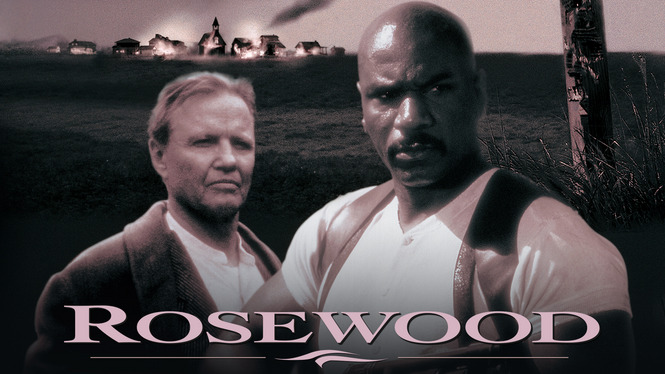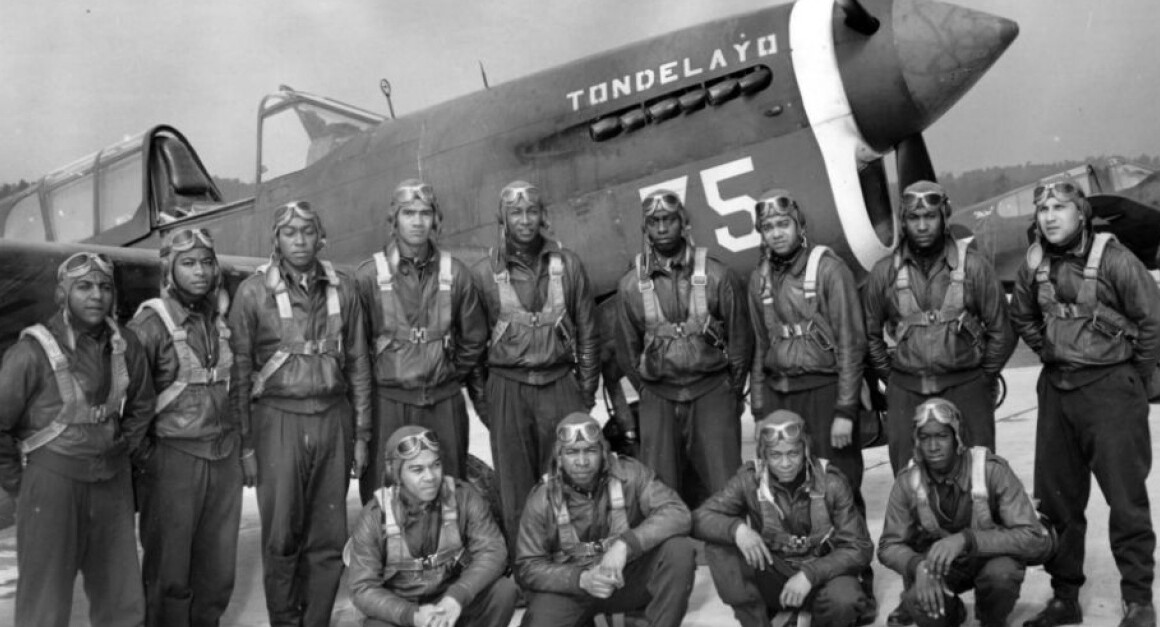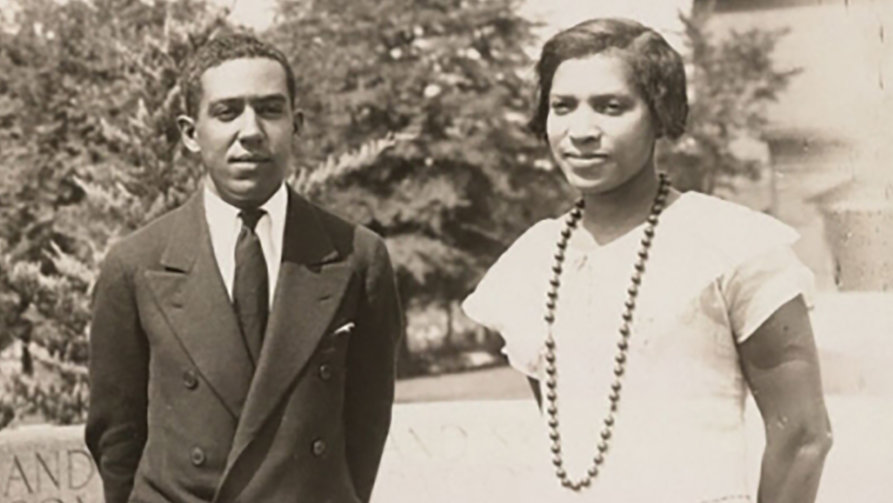Black Art & African American Art History
African American Art
By Richard Powell (excerpted from AFRICANA: THE ENCYCLOPEDIA OF THE AFRICAN AND AFRICAN AMERICAN EXPERIENCE, SECOND EDITION. Edited by Henry Louis Gates Jr. and Kwame Anthony Appiah. (Oxford University Press; April 2005)
Painting, sculpture, graphic arts, and crafts developed by people of African descent in the United States and thematically and stylistically informed by African American culture.
The term African American art means different things to different people. For some the term designates a largely racial phenomenon, describing all artistic products—paintings, sculptures, graphic arts, crafts, architecture, etc.—created by North Americans of African descent. For others the preceding definition fails to take into account the cultural, in addition to the racial, implications of the term. For this latter group African American art refers to the artistic and visual products not just of North Americans of African descent but of many peoples whose work has been shaped thematically, stylistically, formally, and theoretically by the confluence of black Atlantic cultures—folkways and traditions formed as a result of the TRANSATLANTIC SLAVE TRADE and further developed during alternating periods of colonialism, emancipation, discrimination, and self-assertion. For our purposes the concept of African American art moves freely between these two definitions, providing readers with both the breadth of such an idea and the possibilities for an object-centered and culturally informed definition.
Arts and Crafts during the Colonial, Federalist, and Antebellum Years
During America’s infancy (in the period between the 1600s and the early 1800s), what one could describe as African American art indeed embraced a range of forms and definitions. A small drum, several wrought-iron figures, dozens of ceramic face vessels, and a few examples of domestic architecture found among enslaved black communities in the southern United States have been singled out for their similarities with comparable crafts, functional objects, and structures in West and Central Africa. In contrast, black artisans like the New England–based engraver SCIPIO MOORHEAD and the Baltimore portrait painter Joshua Johnson created art that, despite occasional portrayals of black subjects, was conceived in a thoroughly western European fashion. Other workshop- or academically-trained African American artists prior to the American Civil War (1861–1865)—New Yorkers Patrick Reason and William Simpson, Philadelphian Robert Douglass, and the New Orleans– and Paris-based brothers Daniel and Eugene Warburg—also created works of art that were indistinguishable from those of white printmakers, painters, and sculptors.
Civil War and Post-Reconstruction Years
The tensions between an art that referred to people’s social conditions and an art that transcended race and class politics are represented by the works of two artists active during the 1860s and 1870s: sculptor EDMONIA LEWIS and landscape painter ROBERT S. DUNCANSON. Lewis—who studied art at Oberlin College, independently in Boston, Massachusetts, and among American and British expatriates in Italy—used the artistic conventions of neoclassicism to create powerful marble statuary on the subjects of black American emancipation, female oppression, and Native Americans. Duncanson—working mostly in Cincinnati, Ohio, and other locations in the Ohio River Valley—painted dreamy, pastoral scenes that recalled the aesthetics of the Hudson River School rather than overtly racial and political themes. Yet the racially tinged ordeals that both of these artists grappled with at various points in their careers gave even their most apolitical portrait busts and landscape allegories a social dimension, thus justifying the African American designation of their work.
A similar political/apolitical bifurcation is present in the work and lives of artists working between 1865 and 1900. First against a social backdrop of enfranchisement and hope and later against one of disenfranchisement and despair, landscape painters like EDWARD MITCHELL BANNISTER and William Harper created moody, Barbizon School–like scenes, bereft of the political jockeying and white-on-black violence that characterized African American lives at the end of the century. For painter HENRY OSSAWA TANNER the pressures of American racism and the burdens of representing his race were too great. His 1891 move to Paris, France, encouraged his interest in painting mostly biblical scenes in a part academic, part symbolist manner. In contrast, the Athens, Georgia, seamstress Harriet Powers, oblivious to the world of art galleries and exhibitions, created at least two powerful Bible quilts that bore strong similarities to West African textile arts, especially to the cloth appliqués from the AKAN and FON peoples.
Increasingly, heroic and uplifting portrayals of African Americans appeared in paintings and sculpture in the first two decades of the twentieth century. Artist EDWIN A. HARLESTON was renowned for his paintings of distinguished (and affluent) black Americans. Sculptors Isaac Scott Hathaway and May Howard Jackson also dedicated much of their careers to creating portrait busts of African American notables past and present. In the pages of the journal the Voice of the Negro artist John Henry Adams, Jr., created dozens of African American portraits: finely drawn and idealized in the manner of the white illustrator Charles Dana Gibson, but informed by an emerging racial consciousness. In the more symbolic and allegorical works of the sculptor META WARRICK FULLER, a black cultural cognizance manifested itself in important nineteenth-century topics such as emancipation and in pieces that foreshadowed several themes that would be important for artists and intellectuals in subsequent years (the African past, a black cultural rebirth, etc.).
The Harlem Renaissance
The social and political anxieties that many African Americans felt just after World War I (1914–1918) were alleviated, in part, by mass migrations to the urban North. Northern cities offered a respite from the repressive attitudes and mandates of the old Southern order. The new racial compositions of cities like WASHINGTON, D.C., PHILADELPHIA, NEW YORK, PITTSBURGH, DETROIT, CHICAGO, and Saint Louis, in combination with a heightened social consciousness and a seemingly unbound desire for leisure and escapism, conspired to help create the cultural phenomenon known as the New Negro movement. Part social engineering and part spontaneous _expression, this HARLEM RENAISSANCE (as the cultural movement later became known) was realized by a mix of American movers and shakers: social reformers, political activists, cultural elites, progressives in public policy and education, and, of course, artists. Although each of these constituencies had its own reasons for promoting African American achievements in the literary, musical, visual, and performing arts, the collective results of these endeavors was an unprecedented, broad-based focus on African Americans, their art, and the connections to a larger, modernist vision.
Visual artists played a key role in creating depictions of the NEW NEGRO. Alongside their counterparts in literature, music, and theater, painters Palmer C. Hayden, Malvin Gray Johnson, and Laura Wheeler Waring, among others, exhibited bold, stylized portraits of African Americans during this period, as well as scenes of black life from a variety of perspectives. Sculptors RICHMOND BARTHÉ, SARGENT JOHNSON, and AUGUSTA SAVAGE used clay, wood, and bronze to create comparable representations.
Book and magazine publishers of the 1920s and 1930s also helped to disseminate Harlem Renaissance imagery. Published in the pages of THE CRISIS, Opportunity, and New Masses were the blockprint illustrations of James Lesesne Wells, the etchings and drawings of ALBERT ALEXANDER SMITH, and the illustrations and jacket covers of one of the period’s most prolific artists, AARON DOUGLAS.
Great Depression and World War II Years
As the debates among artists and intellectuals around a “racially representative art” shifted to discussions about social responsibility and a “folk” identity, artists like Aaron Douglas increasingly turned to the public arena as a means of addressing art and life in the 1930s. Douglas’s murals for schools, libraries, and YMCAs exemplified this shift toward the social, as did the colorful, compositionally rhythmic easel paintings of Archibald J. Motley, Jr. Many artists in the 1930s who had begun their careers during the Harlem Renaissance and under the aegis of philanthropic organizations like the Harmon Foundation now made art under the auspices of the Federal Arts Project of the WORKS PROGRESS ADMINISTRATION. These artists, like ALLAN ROHAN CRITE, Ernest Crichlow, and DOX THRASH, embraced a visually conservative but politically radical figurative art in which the themes of poverty, racial discrimination, and a growing social consciousness took center stage.
This newfound fascination in the art world with the masses resulted in an expanded appreciation for those artists—black and white—who had not attended art school, whose art was often unsophisticated, and who functioned on the margins of the art scene proper. One of these so-called folk artists, the Tennessee stone carver William Edmondson, was honored in 1937 with a one-person exhibition at New York’s Museum of Modern Art. He was the first African American artist to receive that distinction.
In the final years of the Federal Arts Project several painters emerged out of obscurity and into national prominence. The most celebrated in this group was painter JACOB LAWRENCE. His multipaneled series on such topics as the eighteenth-century Haitian revolutionary Toussaint Louverture, the African American migration experience, and HARLEM struck an emotional chord among art aficionados in the 1940s. Paintings by the intuitive artist HORACE PIPPIN on the lives of ABRAHAM LINCOLN and JOHN BROWN as well as others inspired by biblical verses were also critically acclaimed and highly sought after. Other painters of the late 1930s and early 1940s—like WILLIAM H. JOHNSON, Charles Sebree, and Eldzier Cortor—achieved a measure of success in the larger world of art as well, often fusing the style preferences of the day (color abstraction, figural expressionism, and surrealism) with the artists’ affinities for selected African American subjects.
Abstraction and Realism during the Postwar Years
This balancing act between a race consciousness in art and visual assimilation into the white cultural mainstream—exemplified most emphatically in a nonfigurative, abstract art—was undermined by several artists in the post–World War II years. The work of these artists—decidedly abstract and expressionistic yet at times referential to Africa, black America, and to the evolving civil rights struggle—necessitated an altogether different definition of what was then described as modern Negro art. At the forefront of this new paradigm was HALE WOODRUFF, whose integration of African-design motifs into his colorful, large-scale canvases stood alongside an enigmatic and symbol-laden painterly abstraction in works by other painters. Similarly, a 1950s brand of New York School abstraction was defined in part by the “all-over” compositions of painter Norman Lewis. Lewis, a master of visual wit, irony, and critique, figured in contradistinction to another abstractionist, BEAUFORD DELANEY, who wavered between completely nonillusionistic, gestural canvases and thickly painted, expressive portraits.
In the midst of this moment when abstract art was considered the status quo, several figurative artists, among them Hughie Lee-Smith and CHARLES WHITE, achieved broad recognition. Lee-Smith painted desolate, urban landscapes inhabited by solitary people of different ages and sexes and across the racial spectrum. White, whose career dated back to the 1930s, produced in the 1950s a series of monumental crayon and ink drawings of idealized African American figures. These works, when thematically framed by the news reports of civil rights bus boycotts, lunch-counter sit-ins, and attacks on black protesters by angry whites, took on an even greater power than their abstract counterparts in explicitly communicating something about African American aspirations and dreams. MINNIE EVANS and James Hampton, although far removed from the New York art scene in their respective communities of Wilmington, North Carolina, and Washington, D.C., created powerful artistic statements during this period that not only reintroduced socalled folk elements into the art world, but added a spiritual dimension to black visual culture as well.
The two 1960s artists whose careers and products may be considered to have formed a bridge between the visual past (the omnipresent black figure, overtures to visual modernism, and the need to acknowledge the politics of race) and a visual future for African American art (artistic singularity over racial unity, narrational/perceptual simultaneity, and the interjecting of class, gender, and sexuality into art) are Bob Thompson and ROMARE BEARDEN. The colorful, silhouetted, and enigmatic figures in Thompson’s paintings, derived from the works of the old masters of European painting and the new young lions of jazz, introduced a whole new set of options in African American visual culture. Similarly, the cut-up, collaged, and reconstituted images of Afro-America that Bearden introduced to the public in 1964 inaugurated an expanded and progressive view of art and art-making: a picture that reflected ambiguity, complexity, nuance, and affirmation in black culture.
Black Arts Movement, Abstraction, and Beyond
Art’s capacity to endow the artist, viewer, and others with self-affirmation and a sense of cultural authority became the benchmark for the BLACK ARTS MOVEMENT of the late 1960s and early 1970s. During this period African American writers, performing artists, and visual artists made black culture and the political struggles of black peoples worldwide their raison d’être. Slogans like “Black Is Beautiful” and “Black Power,” as well as jazz and soul music, became the soundtrack for works by painter Murry DePillars, mixed-media artist Ben Jones, and muralist Dana Chandler. Jeff Donaldson, a cofounder of the Chicago-based black artist collective AFRI-COBRA, not only added to this milieu with his own African textile–inspired, mixed-media works, but he wrote influential art manifestos and helped organize international expositions of black artists in Africa and North America.
Many artists whose careers extended back to the 1930s and 1940s resurfaced with a renewed sense of racial solidarity and political insurgency during the Black Arts Movement. Painters LOIS MAILOU JONES and JOHN BIGGERS and sculptor and printmaker ELIZABETH CATLETT all aligned themselves with the younger generation of black artists, creating works that underscored their shared interest in African design sensibilities, the black figure, and the continuing struggle for civil rights.
For many abstract artists like Frank Bowling, Sam Gilliam, Richard Hunt, BARBARA CHASE-RIBOUD, and Raymond Saunders, critical and commercial success provided evidence that black artists were capable of overcoming racial obstacles and taking their rightfully earned places within the contemporary scene. These advancements were made all the more emphatic by the achievements of artists like the Washington painter Alma Thomas, who, at the age of eighty, was the first African American woman to have a solo exhibition at New York’s Whitney Museum of American Art in 1972. Artists who subscribed to a black nationalist agenda argued that Thomas (along with the other well-known black abstractionists) created works that did not challenge the aesthetic sensibilities of the white cultural mainstream. In response, abstractionists like Al Loving, Ed Clark, Joe Overstreet, Jack Whitten, and William T. Williams felt that this line of thinking showed how pervasive more conservative approaches to the visual arts were in African American communities. Both positions demonstrated how difficult it was for even the most sophisticated art connoisseurs to glean cultural elements out of abstractions. The same myopia often existed in interpretations of works by folk artists like CLEMENTINE HUNTER and the evangelist-turned-painter SISTER GERTRUDE MORGAN.
As artists and audiences grew more conversant in the diverse ways that one could express black culture, the 1970s and 1980s ushered in a variety of artists and artworks all comfortably operating under the rubric of Afro-American art. From the photorealism of painter Barkley L. Hendricks and neomannerist stylizations of painter Ernie Barnes to the cloth-and canvas accretions of mixed-media artist BENNY ANDREWS and altar-like installations of sculptor BETYE SAAR, African American art could no longer be contained in neat, stylistic categories. The important exhibitions of past and present African American art organized by curators DAVID C. DRISKELL and Edmund B. Gaither and the definitive histories and art publications of Elsa Honig Fine, Samella Lewis, and Ruth Waddy helped educate the experts and uninformed public alike on all that might constitute an African American art.
African American Art and Postmodernism
By the mid- to late 1980s earlier definitions of African American art would be supplanted by the postmodernist tenets of cultural relativity, art-as-performance, critical inquiries of art and society through one’s work, and interrogations of identity, geography, and history. Several artistic precursors to this new generation had already begun to exhibit these more provocative, postmodernist characteristics in their work. For example, by 1975 artist DAVID HAMMONS was already creating sculptures from black cultural detritus (hair, food, artifacts, etc.) that ironically commented on black identity. Around the same time ROBERT COLESCOTT was making outlandish, cartoon-like paintings that poked fun at the art establishment, cultural conservatives, and ethnocentrism. In contrast, conceptual artist Adrian Piper countered the reigning avant-garde of her day with performances that placed racism at the center of art matters. Also at this time artist Houston Conwill wrestled with the notion of African American space, initially through site-specific earthworks and, later, through culturally informed diagrams and signs.
These pioneers of an African American visual postmodernism helped put into motion a different set of visual criteria in contemporary art: models that, in turn, have engendered an innovative group of artists. This inventive group includes sculptors Alison Saar and Renée Stout and photographers Albert Chong and Lyle Ashton Harris, who explore concepts of objecthood and fetishism; visual artists like JEAN-MICHEL BASQUIAT, Glenn Ligon, and Lorna Simpson, for whom issues of gender and language are central in art; photographers Dawoud Bey, Renee Cox, and Lorraine O’Grady and painters Kerry James Marshall and Howardena Pindell, each of whom presents the black body as a site of theoretical warfare, social research, and desire; and conceptualists like Gary Simmons, KARA WALKER, and FRED WILSON who, through installation art, have problematized American history and the psychology of racism so that display and spectatorship can no longer be viewed as purely innocent acts.
Copyright (c) 2005 Oxford University Press. All rights reserved. Excerpted by permission from AFRICANA: THE ENCYCLOPEDIA OF THE AFRICAN AND AFRICAN AMERICAN EXPERIENCE, SECOND EDITION. Edited by Henry Louis Gates Jr. and Kwame Anthony Appiah. (Oxford University Press; April 2005; 5 Volumes; 4,500 pp.; 0-19-517055-5; Special introductory price until April 30th, 2005 of US $425.00. After April 30th, 2005, the price will be US $500.00).
Ninety years after W.E.B. Du Bois first articulated the need for “the equivalent of a black Encyclopedia Britannica,” Kwame Anthony Appiah and Henry Louis Gates Jr., realized his vision by publishing Africana: The Encyclopedia of the African and African American Experience in 1999. This new multi-volume edition of the original work expands on the foundation provided by Africana. More than 4,000 articles cover prominent individuals, events, trends, places, political movements, art forms, business and trade, religion, ethnic groups, organizations and countries on both sides of the Atlantic.
About the Editors:
Henry Louis Gates, Jr. is W. E. B. Du Bois Professor of Humanities, Chair of the Department of African and African American Studies, and Director of the W. E. B. Du Bois Institute for African and African American Research, Harvard University. Professor Gates is well known as an innovator in the field of African American studies and as the author of numerous works.
Kwame Anthony Appiah is the Lawrence S. Rockefeller Professor of Philosophy and the University Center for Human Values at Princeton University. The groundbreaking Africana—now expanded to a five-volume set, unparalleled in scope, scholarship and accessibility
Available at your local libraries and bookstores. Please visit the Oxford University Press Web site for ordering information: www.oup.com/us/africana









